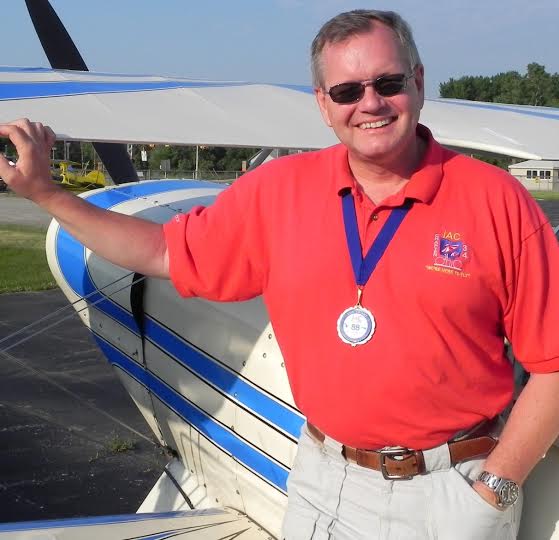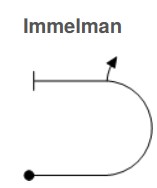Flying the 2023 Sportsman Sequence - Part 3 – The Immelman

German World War I ace Max Immelman’s wing-warping Fokker Eindecker could not have physically performed the maneuver he is now famous for. It appears Immelman actually used what we now call chandelles and wingovers to vanquish his enemies during the Fokker Scourge of 1915-16. Many believe that RFC/RAF pilot extraordinaire D’Urban Victor (D.V.) Armstrong, in his all-red Sopwith Camel, was the first. This topic is covered well by author Annette Carson in her 1986 book, Flight Fantastic: The Illustrated History of Aerobatics, and her book, Camel Pilot Supreme: Captain D. V. Armstrong, DFC. So, what is an Immelman today, and how is it flown in the modern age?

The Immelman maneuver is defined as a vertical half-loop up followed by a half slow roll to upright, with no line between the half-loop up and the half-roll. The British call it the ‘roll off the top’. It is not a hard maneuver to do, but it incorporates many aerobatic elements, throws the pilot around the cockpit, eats up a lot of energy, and is an easy one to fall out of. It is rewarding when done well. It is also a great maneuver to put right before a spin. The half-loop up makes up for some of the altitude you are about to lose in the spin, but mostly the Immelman gets you slowed quickly to spin entry speed.
The biggest problem, especially for those with low-power/high-drag airplanes, is not having enough energy on the top of the half loop to do the half roll. If done with too little energy the half roll can turn into an inverted spin entry. If no spin entry occurs the second problem is the possibility of wallowing and sinking during the half roll. The third problem is finishing the half loop early. The fourth is sagging or settling after the roll. The last is finishing off heading to the right from the left roll. Let’s begin.
To read the full article, click on the pdf below.
![]() FEB2020 SAERO - The Emmelman Roll off the Top.pdf
FEB2020 SAERO - The Emmelman Roll off the Top.pdf
Articles in the "2023 Sportsman Sequence" Series
Flying the 2023 Sportsman Sequence by Gordon Penner, In the Loop January 2023
Flying the Wedge by Gordon Penner, In the Loop February 2023
Flying the Immelman, by Gordon Penner, In the Loop March 2023
Flying the Loop, by Gordon Penner, Sport Aerobatics December 2019
Flying the Half Cuban, by Gordon Penner, In the Loop May 2023
Flying the Humpty Bump, by Gordon Penner, In the Loop June 2023
Flying the Competition Roll, by Gordon Penner, In the Loop July 2023
Flying the Hammerhead, by Gordon Penner, In the Loop August 2023
Flying the Spin, by Gordon Penner, In the Loop September 2023
Flying the Aerobatic Turn, by Gordon Penner, In the Loop October 2023
Online Resources:
Introduction to Aresti, by Brian Howard, www.iac.org/aerobatic-figures
More articles on typical Sportsman category figures
Half Cubans, Accurate 45-degree downlines, by Giles Henderson, Sport Aerobatics June 2011, pg. 28
Aerobatic Trim Part 1, by Gordon Penner, Sport Aerobatics September 2020
Aerobatic Trim Part 2, by Gordon Penner, In the Loop October 2020

